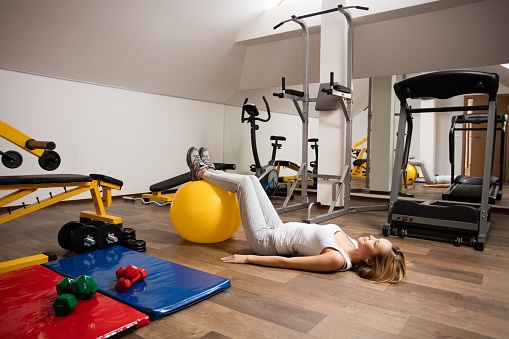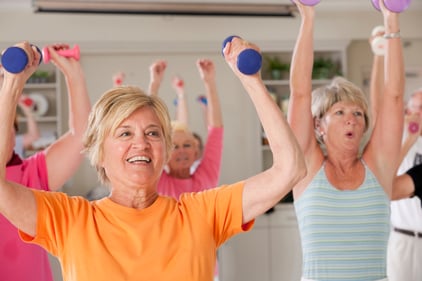 Open 24 hours a day, no membership fees, and no commute; this is what you have to look forward to after you complete your at-home gym! This can be an exciting time, but also overwhelming if you don’t know where to get started on your quest to exercise at home.
Open 24 hours a day, no membership fees, and no commute; this is what you have to look forward to after you complete your at-home gym! This can be an exciting time, but also overwhelming if you don’t know where to get started on your quest to exercise at home.
Planning Your Equipment
If you build a home gym the right way, it should take a couple of years. You don’t want to build the picture-perfect gym with no money left in your pocket and lots of equipment acquiring dust. Make a plan to grow your gym as your workouts progress. You will commit to more complicated workouts, and will need heavier weights and more equipment to mix up your workouts. When you purchase a piece of equipment, you want to know you are going to use it and it is going to be part of your routine. When planning, think of the cost vs. benefit for each piece in your home gym.
If you are a runner and know you will complete most of your workouts in the winter months on the treadmill, you know the workouts you put in will outweigh the cost of the treadmill. You should splurge on this item and buy a state-of-the-art treadmill. If you are just getting into weightlifting, the benefit of an extravagant dumbbell set might not outweigh the cost. Think about what your workouts look like now, purchase that equipment, and build over the next few years.
If there are pieces of equipment that are more of a want than a need or you are working on a smaller budget, look into purchasing used equipment. Lots of websites sell gently used gym equipment. Ask your family, friends, and coworkers if they have equipment they don’t use or have suggestions on brands to purchase.
Home Gym Essentials
If you have no idea where to start, here is a list of a few essentials that are seen in most home fitness centers.
- Adjustable bench: A sturdy, comfortable bench is vital to your workouts. An adjustable bench can be used in so many different ways.
- Power rack: If you are looking to lift heavy and do it safely, this piece is a no-brainer. You will bench, squat, press, and deadlift using this machine.
- Barbell and plates: These can be used for free-standing exercises or along with the power rack. Purchase the weights you know you will use and you can add to your collection over the years.
- Adjustable dumbbells: They are an investment but will save you money and space in the long run.
- Piece of cardio equipment: Pick a piece that you enjoy or is right for your budget. These pieces will be pricier, so choose one you know you and your family members will use.
After you have the essentials you can purchase some extra fun pieces of equipment that are typically lower cost. These may include jump ropes, resistance bands, stability balls, etc.
Planning the Space
You will also want to think about where you place your gym, what kind of flooring you use, paint color, windows, display case with awards, motivational quotes, posters, TV, etc. These are things that will be personal preference but are important and will make your gym unique. Include items that motivate you and fit your workout personality. You want your gym to be a place that you can escape to and feel motivated to work toward your goals!


 Individuals who are new to regular exercise, or those who are considering recommitting after a long hiatus, may have preconceived notions about what it takes to effectively reap the benefits of a new routine. For this reason, I want to establish a number of foundational principles and debunk some common myths surrounding fitness. Reworking your current schedule to
Individuals who are new to regular exercise, or those who are considering recommitting after a long hiatus, may have preconceived notions about what it takes to effectively reap the benefits of a new routine. For this reason, I want to establish a number of foundational principles and debunk some common myths surrounding fitness. Reworking your current schedule to 
